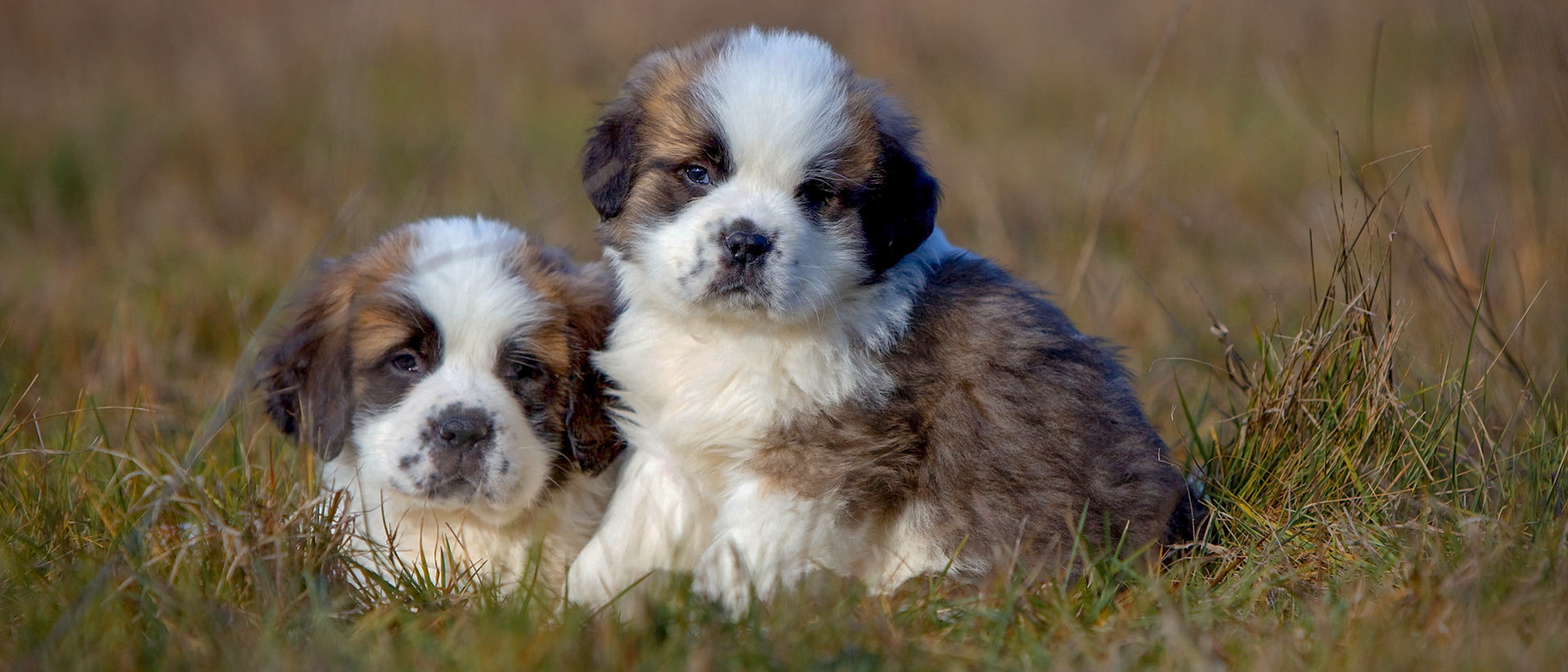The key stages of puppy growth

Over the first year of its life, your puppy will undergo significant changes in their size, shape and behaviour. Comprender las etapas clave de su crecimiento te ayudará a saber qué esperar en diferentes momentos en sus primeros años y prepararte de la manera correcta.
One important thing to note is the difference in the first few years between small breed and large breed dogs. Depending on the sort of dog you have—along with their sex and their parents—growth will happen at a different pace, and there are different things to look out for.
The first three to four weeks of your puppy's life
The first 14 days after your puppy is born are a crucial time to make sure they progress into healthy adulthood. Es importante cuidarlo mucho durante las primeras 48 horas y asegurarte de que reciba el calor y la nutrición que necesita. Esto incluye el calostro, que los cachorros obtienen de la leche de su madre, ya que les ayuda a mantener su sistema inmunológico. Entre el noveno y el décimotercer día, el peso de tu cachorro debiera duplicarse, por lo que si le está costando subir de peso, es mejor que consultes con un veterinario.
One month into their life
During the first month, your pup's first teeth will appear, but their jaw and tooth strength are still relatively weak. Between 25 and 30 days, their weight will multiply by four, and the first hairs they had will begin to shed and be replaced by their "real" fur. They're not yet at their "growth spurt" stage, but it's essential to start as you mean to go on with a nutritionally appropriate weaning food.
All dogs, whatever their breed, have an "immunity gap" between four to 12 weeks where they are susceptible to illness. This is because they've stopped feeding on their mother's milk—which transmits immune support—but their bodies aren't yet able to develop their own immunity. In this stage, keep a close eye for any signs of sickness.
Your puppy at three to five months
At this point, your puppy will be growing fairly rapidly whether they're a small or large breed. By five months, large breed dogs will have developed the skeletal structure they need for adulthood and be half their adult weight. They will also have at least double the nutritional requirements of an adult dog! Small dogs will be going through their most intense growth period and you can stop rehydrating their food—give them a larger kibble which helps them chew and develop good dental hygiene for their new teeth.

Puppies at eight to 10 months old
By this time, small breed dogs will begin to tail off in their growth and have reached their adult weight, but large breeds will continue to grow more steadily. The difference in their size and pace of growth is significant: small breeds rapidly grow to 20 times their birth weight, while large breeds grow to 100 times but more slowly. From eight to nine months, the main growth for larger breeds occurs in their skeleton and organs.
Up to 18 to 24 months for your giant puppy
If you own a larger-breed puppy they will reach full maturity between 18 and 24 month. This phase will be when they complete their growth cycle by putting on the muscle of an adult dog. Expect them to bulk out and get heavier, and to start to look more like an "adult" dog with well-proportioned paws and limbs.
By knowing about these different growth stages, you can prepare yourself for what to expect as your puppy develops and feel confident you're giving them the care support and the right diet they need in their early years.
Related Articles
Tailored nutrition for your puppy
A range of formulas that help build their natural defences, support healthy growth and digestive system development.
Like & share this page